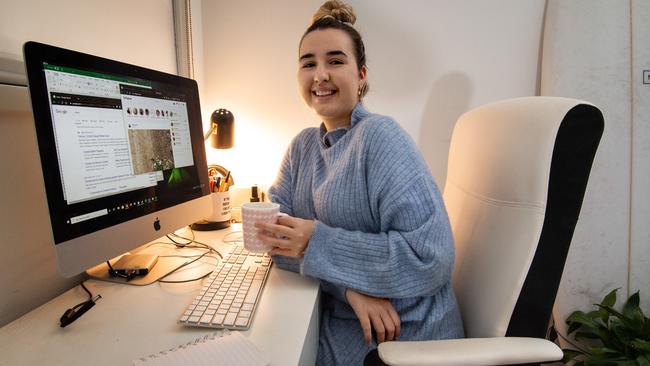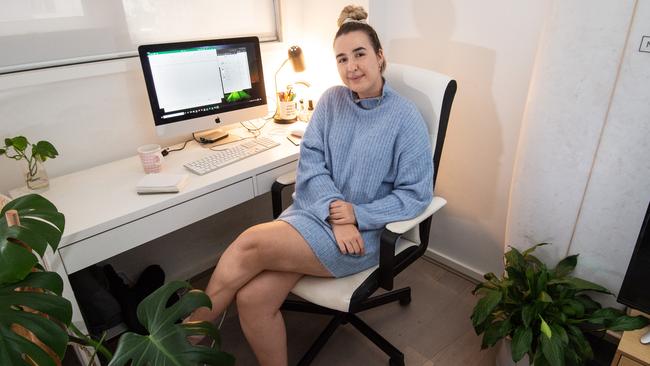Working from home’s top tax question for a larger refund
Millions of workers are claiming extra home office tax deductions this year, many for the first time, so it’s worth knowing what strategy will give you the biggest refund.

Saver HQ
Don't miss out on the headlines from Saver HQ. Followed categories will be added to My News.
Millions of Australians working from home during the pandemic are getting extra tax deductions this year and face a big question: what claim method do they choose?
The Australian Taxation Office’s new special 80c per hour COVID-19 deduction for working from home expenses has been welcomed by some but sparked warnings from others that it could potentially cost people a bigger tax refund.
H & R Block director of tax communications Mark Chapman said people should work out which of three ATO methods would give them the biggest deduction.
People can claim either their actual costs, a flat rate of 80c per hour worked at home, or a fixed rate method that’s a hybrid of the other two methods.
Mr Chapman said keeping detailed records and apportioning costs between work and private use “will usually give you the biggest deduction, but unfortunately it’s the most complicated to work out”.

“A lot of people have read about the 80c rate and done back of the envelope calculations, and figured out it doesn’t give them a particularly good deduction compared to the other methods,” he said.
Mr Chapman said speaking with a tax specialist could be worthwhile, “particularly this year” given the extra expenses and extra choices.
Digital content manager Kitch Catterall, 24, started working from home in early March and said she had spent extra money on internet, stationery, an office chair and computer equipment.
Ms Catterall said she was attracted to the ATO’s new shortcut method “rather than going through every single thing” but said she was likely to seek help from an accounting graduate friend.
HLB Mann Judd tax partner Peter Bembrick said deductible working from home expenses included:
• Electricity and gas.
• Cleaning costs.
• Phone and internet expenses for work use.
• Stationery and computer accessories.
• Repairs and depreciation of home office equipment and furniture.
“Any expenses that have been incurred because people are working from home following the lockdown can potentially be claimed as a tax deduction,” Mr Bembrick said.
“A lot of people have bought cameras and headsets that plug into their computers.”
Workers spent up big on home office supplies, equipment and furniture during the lockdown, and Officeworks national merchandise manager Jim Berndelis said strong demand had continued.
“People still use June as a period in which they’re buying up items they’re eligible to claim,” he said. “We continue to see strong demand for technology and office furniture.”
THREE WAYS TO CLAIM
• Actual cost method, where all expenses are recorded and apportioned between work and private use.
• Shortcut method, introduced by the ATO for COVID-19, allows people to claim 80c per hour worked at home from March 1 to June 30.
• Fixed rate method allows a 52c per hour deduction for expenses such as utilities and repairs, but taxpayers can still claim phone, internet, stationery and other costs separately.
Originally published as Working from home’s top tax question for a larger refund
